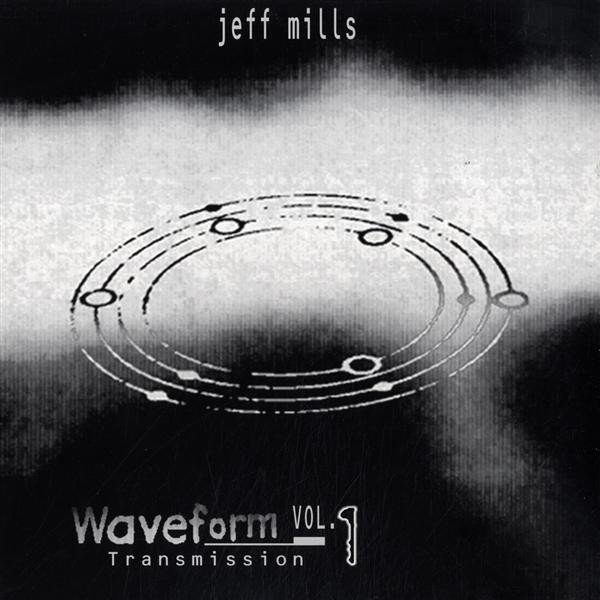From its roots in early 80s Detroit, techno has grown into a globally successful and highly influential electronic music genre, with numerous sub-genres and local scenes. For many fans though, the techno that originated from its birthplace remains some of the most emotive, powerful and radical music of the twentieth century.
Detroit techno has had two distinct phases. The first, broadly speaking, spans the early 1980s to the end of the decade, with a so-called ‘second wave’ of younger producers becoming prominent in the 90s. The creation of the genre is generally credited to ‘The Belleville Three’: Juan Atkins, Kevin Saunderson and Derrick May (who has recently been accused of sexual assault). Along with other Detroit producers like Eddie Flashin’ Fowlkes, James Pennington, Blake Baxter and Santonio Echols, they produced a series of groundbreaking records in the mid/late ‘80s which created a brand new musical genre. With a few exceptions, the early years of techno was largely single rather than album based, but as the genre matured, second-wave artists like Jeff Mills, Mike Banks, Robert Hood, Stacy Pullen, Carl Craig and others developed the genre in different directions and techno quickly began to produce high-quality albums.
There were many musical influences that contributed to the creation of techno. The Detroit pioneers were following in the footsteps of artists like early drum machine adopter Sly Stone, futurist psychedelic soul producer Norman Whitfield, Miles Davis and his electronic boundary-pushing music of the 70s, Herbie Hancock and Stevie Wonder’s use of the very latest in synth technology to expand the language of funk and jazz, and P-Funk’s pioneering of the synth bass/synthesised clap sound.
The early ‘80s playlists of Detroit’s legendary radio DJ The Electrifyin’ Mojo give a snapshot of the kind of records that were popular on the city’s party scene just before techno’s creation, as well as neatly summarising much of the music that influenced techno’s sound and outlook. On his WGPR Midnight Funk Association radio show, Johnson played P-Funk, Prince, Kraftwerk, the B52s, Visage, Ultravox, Yellow Magic Orchestra and genres like electro, synth-pop, Euro disco and Italo disco, along with post-disco/electronic-soul from contemporary labels like West End and Prelude. The uniting factor in his playlists was the use of drum machines and synthesised sounds. Detroit’s kids called this particular blend of music ‘progressive’ and built a club scene based around it.
As detailed in Dan Sicko’s book Techno Rebels, there were few social outlets for teenagers in Detroit at the start of the 80s. In a city with a rapidly declining manufacturing industry and shrinking population, school kids organised social clubs to hire DJs, lights and venues to put on parties, their clubs taking on “elitist characteristics…centred on somewhat naive ideas of sophistication, class and distinction.” They gave their social clubs names like Plush, Funtime Society, Universal and GQ Productions, names that were upwardly mobile and that linked in with the perceived sophistication of their synthesised, drum machine-led ‘progressive’ music.
The sleek, streamlined and robotic sounds of Kraftwerk’s pioneering electronic music were a major influence in the development of techno, as was early 80s electro from artists like Afrika Bambaata, Newcleus, Warp 9 and Hashim, who had themselves been influenced by Kraftwerk. Electro reworked the rhythms of funk via drum machines, adopting a futurist, minimal and often abstract musical aesthetic that was also extremely danceable and was a key techno precursor. And the city of Detroit itself also influenced how techno sounded. Author Simon Reynolds in his dance music history Energy Flash points out that “Atkins and May both attribute the dreaminess of Detroit techno to the desolation of the city.”
All these influences can be heard, or at least felt, in Detroit techno: whether it was a squelching synth bass à la P-Funk, a minor 9th chord straight out of a Herbie Hancock jazz funk track, a Kraftwerkesque arpeggiated synth line or a rigid new wave-style rhythm track, techno reinterpreted and repurposed all these influences via newly available and relatively affordable semi-pro studio equipment. In doing so, the techno pioneers created a revolutionary break with R’n’B history: techno was the next step in a black music lineage that stretched back through electro, boogie, disco, funk, soul and jazz, but in its eventual complete rejection of orthodox instrumentation and song structure and its commitment to futurism, techno also rendered traditional R’n’B music an anachronism.
From Mike Banks’ blissful marriage of jazz and electronics, to Drexciya’s angular robotic funk, from Robert Hood’s distillation of techno down to its raw, rhythmic building blocks, to the opulent yet melancholy productions of Carl Craig, Detroit techno is a body of work that is progressive, revolutionary and hugely influential — as well as being some of the most powerful and beautiful electronic music ever created.




















